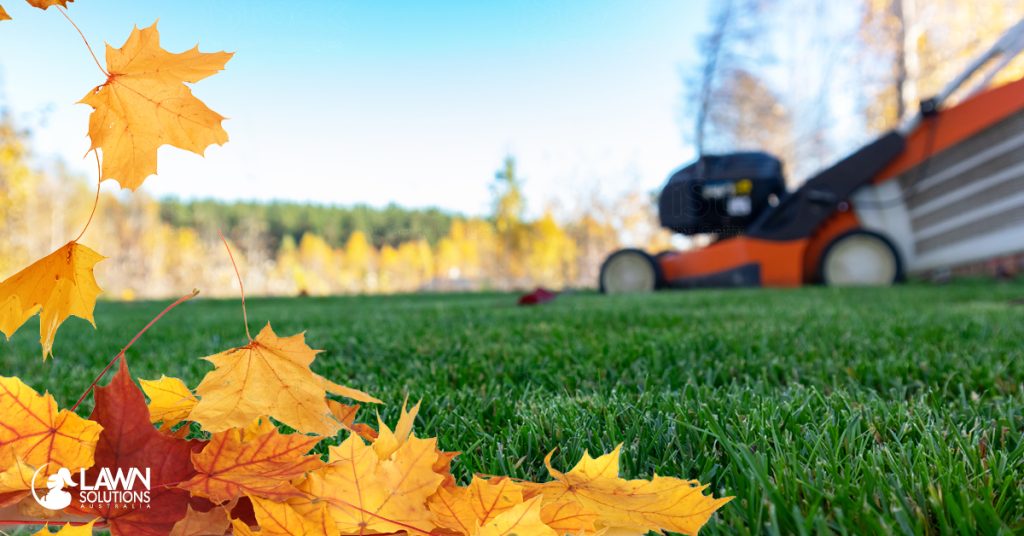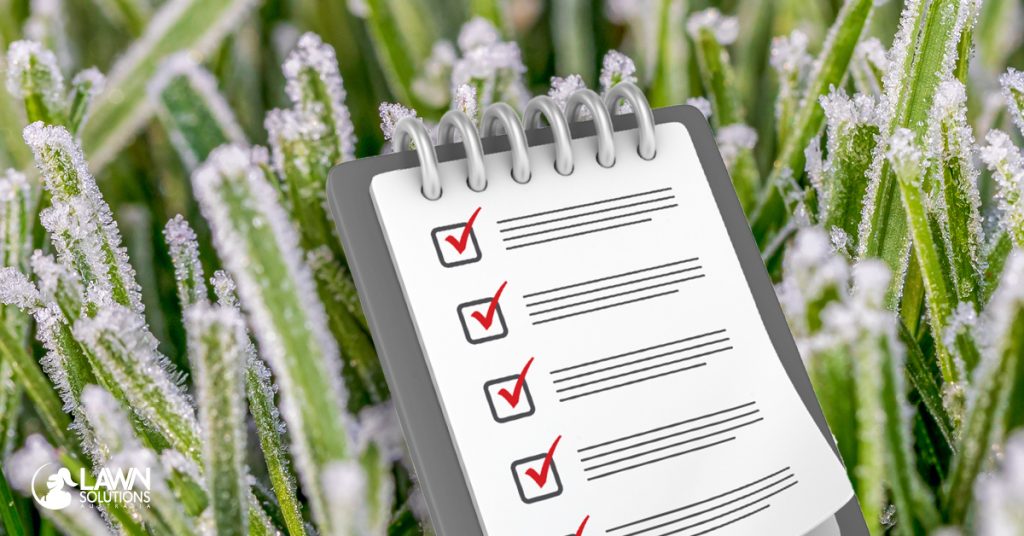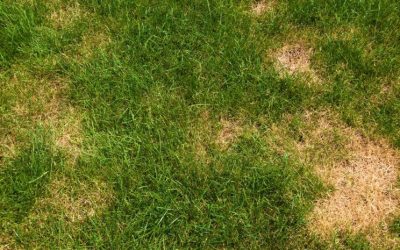Laying Lawn in Autumn and Winter
When most people think about laying a new lawn, they picture summer barbecues, warm soil, and easy establishment. But here’s a little industry secret: autumn and winter aren’t off-limits for laying turf. Although it will take longer to establish, laying a lawn in winter can actually have some great benefits.
Cooler weather has its perks – lower evaporation rates, less competition from weeds, and fewer pests. But it also slows down root development and calls for a bit more patience and planning. Whether you’re laying a whole new lawn or just repairing some bare patches, you can make your yard look great without waiting for winter to be over.
So, if you’re considering rolling out fresh turf during the cooler months, here’s what you need to know to get it right.

Benefits of Laying Lawn in Autumn and Winter
Less water is required
During the cooler months, lawns don’t need as much water. This is true for an establishing lawn as well. There are fewer hot days in autumn and winter, and therefore the grass is not going to dry out as much as it would in spring or summer. That isn’t to say you won’t need to water at all, but the water required is almost halved.
Less mowing is needed
By laying a lawn in autumn or winter, you won’t need to worry about mowing until spring rolls around. As the new lawn won’t fully establish until spring, it won’t continue to grow and will simply go into an idle state. It isn’t anything to worry about, and you’ll notice your new lawn spring to life at the end of winter.
Considerations for Laying Turf in Autumn and Winter
Your climate matters more than you think
Australia’s climate zones vary massively. What works in Perth might fail in Canberra. If you’re in a warmer zone (think Sydney, Brisbane, or Perth) you’ve got more leeway. Turf will still grow, albeit a bit slower. For cooler zones like Melbourne, Adelaide, or Hobart, you’ll need to pick your turf type and timing carefully to avoid issues with dormancy and frost.
Not all turf types are built for the cold
This is where a lot of DIY turf jobs go wrong. The turf type you choose can make or break your success when laying in cooler weather.
Buffalo varieties, like Sir Walter DNA Certified, are the go-to for autumn and winter. They’re hardy, shade-tolerant, and keep their colour longer in cold conditions. They’re also less likely to go completely dormant, so they’ll still make progress even if it’s slow.
Kikuyu can work if you’re in a sunnier, warmer spot, but it tends to yellow off and slow down dramatically in winter. Couch and Zoysia also prefer warmer weather as they go dormant over winter. That’s not to say you can’t install these, they just might not establish properly until Spring.
Sir Walter grass is the safest option and most likely to reward your effort with a strong start before spring hits.
Soil prep is the secret weapon
The cooler the season, the more critical it is to get your soil prep right. In warm weather, turf will power through subpar preparation. In autumn and winter? Not so much.
Start with a thorough clean-up. Remove any weeds, rocks, or old grass, then dig through the top 100mm of soil. If you’re dealing with clay-heavy soil, blend in some sand and organic matter to open it up. A quality turf underlay (usually a 60:40 sand-soil mix) will give your new lawn the best chance at healthy roots.
Before you lay a single slab of turf, rake and level the soil, then roll or compact it lightly to eliminate air pockets. Apply a starter fertiliser, like Lawn Launcher, and it’ll slowly feed the turf during its early root establishment phase, even if growth is sluggish.
Timing and weather windows
Turf needs soil temperatures above 14°C to root effectively. In most of Australia, you’ll find those conditions well into autumn and, in warmer states, again from late winter. If you have the chance, you should keep an eye out for a mild spell, ideally avoiding frost, heavy rain, or extended cold snaps.

How to Lay Turf in Cooler Weather
The actual process of laying turf doesn’t change in winter, but the stakes are higher if you cut corners.
Lay the turf the day it arrives – don’t let it dry out. Begin along a straight edge, stagger the joins like brickwork, and press each slab firmly into the soil to ensure solid contact. Use a roller if you have one. Avoid walking directly on the turf for at least a few weeks unless it’s for watering or minor adjustments.
Even though it’s cooler, the turf still needs moisture. Water as soon as it’s laid, and continue lightly every couple of days for the first two weeks, especially if there’s no rain. Don’t go overboard; oversaturating the soil during a cold snap can do more harm than good.
Patience is the name of the game
In summer, turf gets going fast. In autumn and winter, progress slows dramatically. Don’t panic if you don’t see much above-ground activity for a few weeks. Typically, you can expect light root bonding in 3–4 weeks during autumn, and maybe 5–6 weeks during winter.
Your first mow can usually be 4–6 weeks after laying, depending on soil warmth. Test the turf by gently lifting a corner. If it resists, roots are developing. Use a high setting on your mower and never cut more than a third of the leaf height at once.
Full establishment may take up to 12 weeks in winter. That’s normal. The key is maintaining light moisture and resisting the urge to overmanage.
What can go wrong – and how to fix it
Even with good prep, turf can behave unpredictably in cold weather. If you spot yellowing patches, it could be due to overwatering or poor drainage.
Fungal issues are more common in cool, wet conditions, especially where turf stays soggy. If you spot discoloured or slimy patches, reduce water and consider a targeted fungicide.
The spring payoff
If you’ve done the groundwork during autumn or winter, you’ll be rewarded with a strong, green comeback in spring. As temperatures rise, the turf will respond quickly. Around mid-September, give your new lawn a solid feed with a nitrogen-rich fertiliser and expect to see rapid thickening and greening from there.
Is It Worth Laying Turf in Autumn or Winter?
Yes! Just make sure to:
- Pick the right turf (Buffalo leads the pack)
- Prepare your soil thoroughly
- Watch your weather windows
- Adjust your expectations
Laying turf in autumn or winter isn’t just possible, it can be the smart choice. Less weed pressure, better long-term moisture, and early spring growth set your lawn up to thrive. The key is going in informed and not rushing the process.
If you’re not sure whether your lawn is ready or what turf is best, get in touch with us at Buy Turf Online. We’re always happy to help you choose the right product for you.

read more!
recent posts
What is the Best Grass for a Lawn? A Complete Guide to Top Choices
Discover the best grass options for your lawn with our complete guide. Make informed choices for a lush, healthy yard. Read more to find your ideal grass!
Choosing the Right Weed Killer for Your Sir Grange Zoysia Lawn
Discover the best weed killer for Sir Grange Zoysia and essential tips for effective application. Enhance your lawn’s health and beauty!
Why Is My Zoysia Grass Dying? Common Causes and Solutions to Revive It
Is your Zoysia grass struggling? Discover common causes of decline and effective solutions to restore its health. Read the article for expert tips!

Our Turf
TifTuf Bermuda
Buy Turf Online © 2025 All Rights Reserved. | Proudly Designed and Developed by Sydney ICT



